
Working for the liberation of all beings everywhere. Bringing higher consciousness to the planet, one eternal moment at a time.
Zen Flute Beginning Classes
DVD (Set of 10) Approximately 1 hour each
Zen Flute Complete Set of 10 DVDs
Price: $199.95
Sample (Class #1)
Price: $24.95
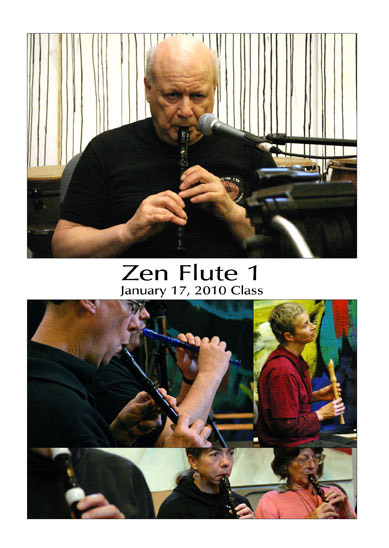
About Class #1
At this class, E.J. Gold played a wide range of flutes ranging from a very inexpensive plastic "2 Buck Chuck" all the way to a $4,000 wooden flute , demonstrating clearly that it's not the flute, it's the player.
Mr. Gold stongly advised that anyone wishing to purchase a flute inform him of their preference and price range, and he will personally locate and test the finest quality flute within their perameters.
"It's not just the sound, it's the feel." E.J. said as he went on to explain that there's a back-breath flowing into the body.
The first homework assignment was outlined and demonstrated including specific instructions for correct fingering and exactly how to approach making a clear, full and constant tone. An excellent beginner's lesson.
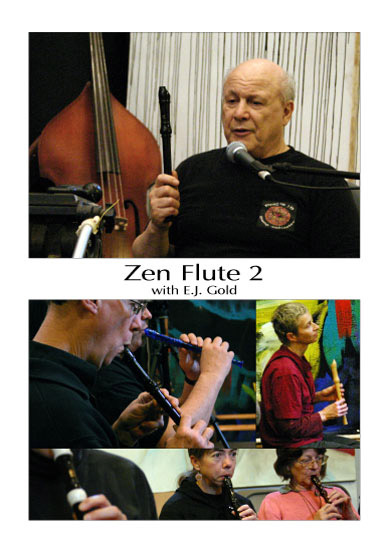
About Class #2
At this class, E.J. Gold offered exercises to help the student get acquainted with their flute.
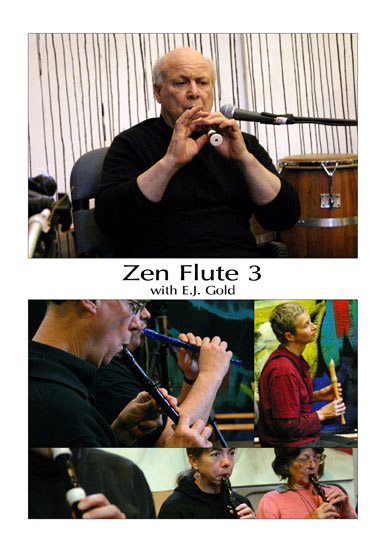
About Class #3
E.J. Gold paints a picture of man on Earth, one of many planets now known to scientists, as part of life, which is technically one single organism spread all over the surface. We can think of the human body as essentially a feeding tube with an intake at one end and an exit for waste products at the other end. Recognizing man as a chemical factory, a machine that is constantly recycling matter adding to the .mulch., Gold reveals that by adding another 12 inches to our 30 foot-long feeding tube, we have the possibility of using our exhaled breath, that which has been thrown away, to transform the human biological machine.
Playing the Zen Flute converts the ordinary automatic attention to work with the breath, heart beat, fingers, emotions, thoughts, imagination, posture and aesthetic subtleties. The development of attention and accomplishing the skill of playing the Zen Flute can have an effect far beyond what one, at first glance, ever imagined.
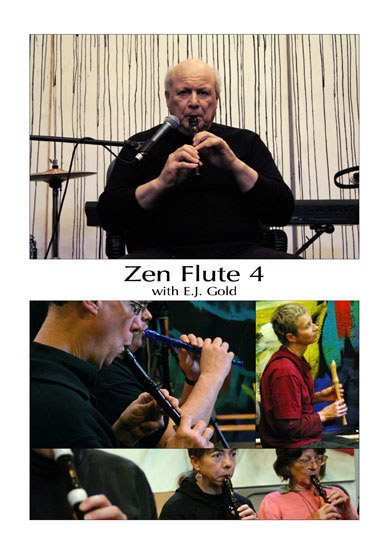
About Class #4
E.J. Gold demonstrates simple basic exercises to build the skill needed to play the Zen Flute. No need to worry about playing notes or a scale. Start by getting your fingers accustomed to lifting and landing on the holes without fishing around for the correct position.
Mr. Gold directs the class in relaxing the facial mask. Playing the Zen Flute teaches you how to transform your human biological machine into a transformational apparatus, using one of the transformational tools you have at your disposal - your natural breath - using it in a comfortable and safe way to increase your "chi".
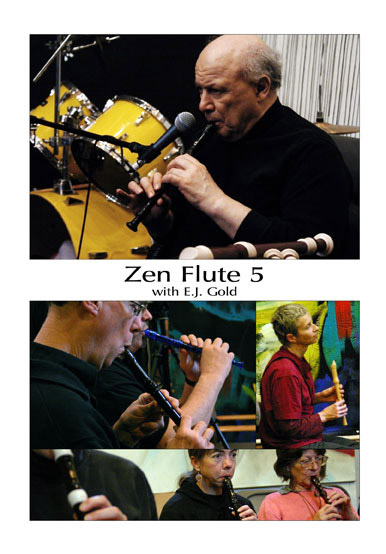
Intermediate Flute Lessons
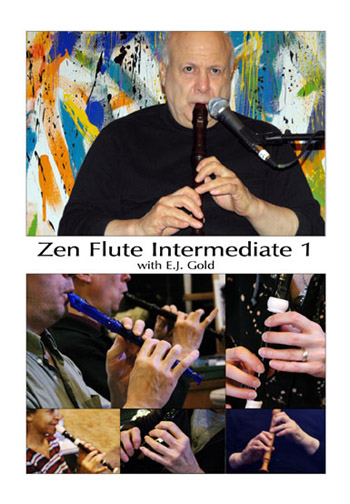
These lessons are the next step after completing the Beginning Zen Flute Classes.
Click here for more info...
About Class #5
Students were told to define where your fingers belong on the flute by feeling the column of air as you exhale into the flute. Use the pad of your finger, not the tip. Sense your fingers on the holes, lift each finger except the forefinger and thumb of the left hand and place them back exactly to where your fingers came from just as if you were to put your keys or wallet away in the same place everytime after use.
E.J. Gold plays the Zen Flute demonstrating techniques that produce quaver, numerous different types of breath-control resulting in different types of sound, and jumping from note to note non-linearly. Posture, breath, embouchure, relaxation, rhythm, fingering - all go into playing the Zen Flute.
E.J. also introduced new fingering exercises and how to change registers as you play. The homework was to develop little songs by making up patterns and following a rhythm. An essential DVD for reviewing over and over again all the many different techniques introduced in the numerous areas of playing Zen Flute.

About Class #6
E.J. Gold demonstrates a variety of plastic and hand-made wood zen flutes. Starting with the most inexpensive "2 Buck Chuck", he plays intricate delicate rhythms utilizing diverse tonal qualities and many of the techniques introduced the week before - specific types of breath control, fingering, quaver, embouchure and changing registers from low to high and back again.
The spontaneously improvised music becomes more refined and elegant as E.J. plays the hand-made rosewood soprano, tulipwood, basswood, pearwood and grenadilla alto and basswood tenor instruments. He plays each skillfully showing the difference between the plastic flutes as compared to the more expensive pearwood, tulipwood, vintage Van Huene soprano, and the grenadilla alto flute which he uses for invocational recordings.
Homework given was to exercise lifting all your fingers in rapid succession.
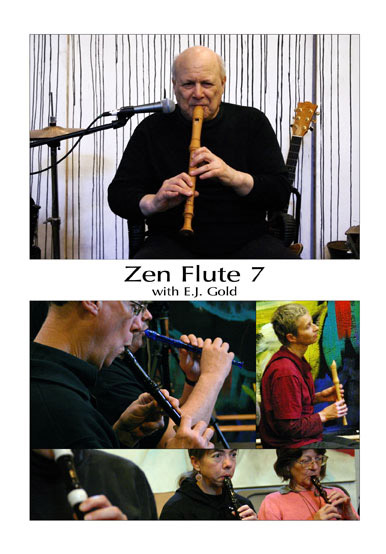
About Class #7
E.J. Gold explains that relaxation is the key. Naturalizing your breathing and bringing it into harmony will balance oxygen and carbon dioxide levels in addition to serotonin and melatonin levels. Not only do you need to be physically relaxed as if you had just come out of a sauna, but you need to adopt the "twilight" state - as if just before falling asleep, relaxed in a high state of attention and awareness - the state familiar to those who work with the BeaconTM. John Lily called this a state of High Indifference. In this state, hitting a "bad" note is simply a matter of fact without blame, worry, high anxiety or stress - no one thing more than another.
In playing the Zen Flute, you're looking for clarity of tone, which is dependent on how relaxed your breathing, your facial mask, neck, shoulders, your fingers and your hands can be. A relaxed hand holds the flute delicately which also affects how precisely your fingers come down to cover the holes.
"There's a kind of mindlessness, empty of mental chatter and, at the same time a mindfulness," E.J. said about playing the Zen Flute. "Get out of the way of the instrument. How to do this is to listen to the flute playing and be eternally amazed."

About Class #8
Your left hand is the key to moving up and down the registers. What you do to get to the high register is to hold the flute with your left thumb and forefinger and slide your left thumb so it's only covering half of the hole. Replace each finger playing each descending note, and when you get down to the bottom of the high register, recover the thumb hole entirely and lift all your fingers except the left forefinger, and then place the fingers down consecutively.
Using the pro Yamaha plastic flutes (available from Musician's Friend for $25.00 and up) E.J. played in the higher register. To bypass problems with tone and breath, he showed how to play the 2 Buck Chuck in the high register -- keep the 3 left fingers covering their holes. If you go too high you'll accidentally drop down register.
If you have problems getting to the low note, raise your right fingers and work your way down to regularize your breathing while placing your fingers down one at a time.
E.J. demonstrated "the care and feeding" of your Zen Flute explaining the important tips for clarity of tone. Warm up your flute under your arm to cut down on the condensation of your breath inside the flute and plunge it dry to keep it clean from bacterial growth.
You are always working toward clarity of tone. How you hold the flute, how you form the cavity inside your mouth, and how you can use your tongue to get different tones all were demonstrated as E.J. closed the class playing the Zen Flute in both high and low registers.
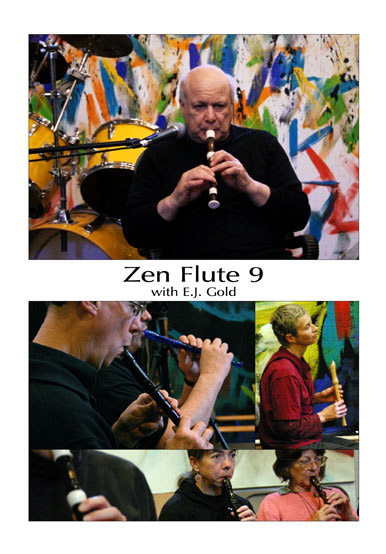
About Class #9
E.J. Gold delves into wave theory -- attack, sustain and decay of a sound -- explaining wave perturbation and cancellation. How you attack an instrument relates to your approach to a note and may also affect the sustain of the note as in tremolo, vibrato, echo and reverb. E.J. demonstrates on the Zen Flute four different attacks playing the same note and the same attack on four different notes. Soft all the way to very hard attacks can be achieved in a variety of ways -- very soft exhalation into the flute, changing how you blow into the flute at the initial moment of the note and using your tongue to create different sounds in your mouth as in saying "tuh" or "wah".
E.J. explains and demonstrates different ways of sustaining a note -- specifically quaver, vibrato, trill, glissando and micro-toning effects created by lifting, hammering and rolling the fingers around the hole. Notice how you get a different effect and feel by the ease in which you raise and lower your finger on the holes and how you vary the strength of your breath.
In covering the decay of a note, E.J. discusses harmonics and compound wave forms and how frequencies are created, crash and diminish. Put this background together with changing registers, nonlinear note formations and the subtleties of creating a tone, which gives the basis for the homework.
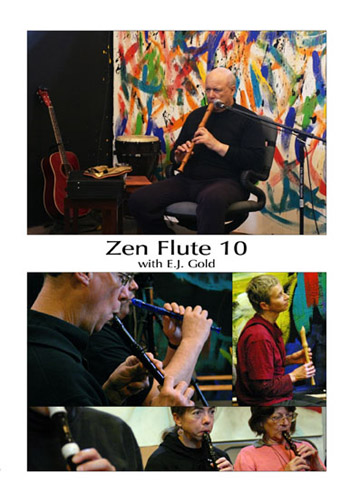
About Class #10
As E.J. warmed the head of the Pearwood flute under his arm, he gave an in-depth introduction to numerous wooden Zen Flutes handmade in Germany by individual craftsmen from beginning to end. Plastic flutes are adequate for most things you are doing as a beginner. An average wooden flute is not worth getting if it's under $2,000. The two notable exceptions are the Pearwood ($400) and the Tulipwood ($1200 - $1500).
As E.J. showed how to apply the cork wax to a wooden flute, he explained that you need only use it sparingly and only when the cork feels dry. He outlined the schedule to strictly adhere to when breaking in a wooden flute. He further explained that the Pearwood flute is the most likely choice for the beginner although he gave high recommendation to the Tulipwood which is only one notch below the supreme Grenedilla and Ebony (the latter wood he personally doesn't like). He explained that the Pearwood is a more gentle wood; whereas the Boxwood is a harder, denser wood with a sharper tone making it slightly more difficult for the beginner. E.J. played many different wood flutes, clearly demonstrating their differences as well as the subtleties you would never be able to achieve playing a plastic flute.
E.J. revealed that the wooden flutes, unlike the plastic, will automatically adjust your breath and you can use this to teach yourself correct breathing. Correct breathing causes a transformative process, and this is why had E.J. found the Zen Flute years ago, he would have presented only that.


